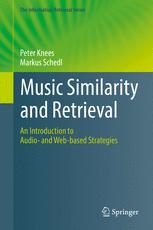

Most ebook files are in PDF format, so you can easily read them using various software such as Foxit Reader or directly on the Google Chrome browser.
Some ebook files are released by publishers in other formats such as .awz, .mobi, .epub, .fb2, etc. You may need to install specific software to read these formats on mobile/PC, such as Calibre.
Please read the tutorial at this link: https://ebookbell.com/faq
We offer FREE conversion to the popular formats you request; however, this may take some time. Therefore, right after payment, please email us, and we will try to provide the service as quickly as possible.
For some exceptional file formats or broken links (if any), please refrain from opening any disputes. Instead, email us first, and we will try to assist within a maximum of 6 hours.
EbookBell Team

5.0
38 reviewsThis book provides a summary of the manifold audio- and web-based approaches to music information retrieval (MIR) research. In contrast to other books dealing solely with music signal processing, it addresses additional cultural and listener-centric aspects and thus provides a more holistic view. Consequently, the text includes methods operating on features extracted directly from the audio signal, as well as methods operating on features extracted from contextual information, either the cultural context of music as represented on the web or the user and usage context of music.
Following the prevalent document-centered paradigm of information retrieval, the book addresses models of music similarity that extract computational features to describe an entity that represents music on any level (e.g., song, album, or artist), and methods to calculate the similarity between them. While this perspective and the representations discussed cannot describe all musical dimensions, they enable us to effectively find music of similar qualities by providing abstract summarizations of musical artifacts from different modalities.
The text at hand provides a comprehensive and accessible introduction to the topics of music search, retrieval, and recommendation from an academic perspective. It will not only allow those new to the field to quickly access MIR from an information retrieval point of view but also raise awareness for the developments of the music domain within the greater IR community. In this regard, Part I deals with content-based MIR, in particular the extraction of features from the music signal and similarity calculation for content-based retrieval. Part II subsequently addresses MIR methods that make use of the digitally accessible cultural context of music. Part III addresses methods of collaborative filtering and user-aware and multi-modal retrieval, while Part IV explores current and future applications of music retrieval and recommendation.>